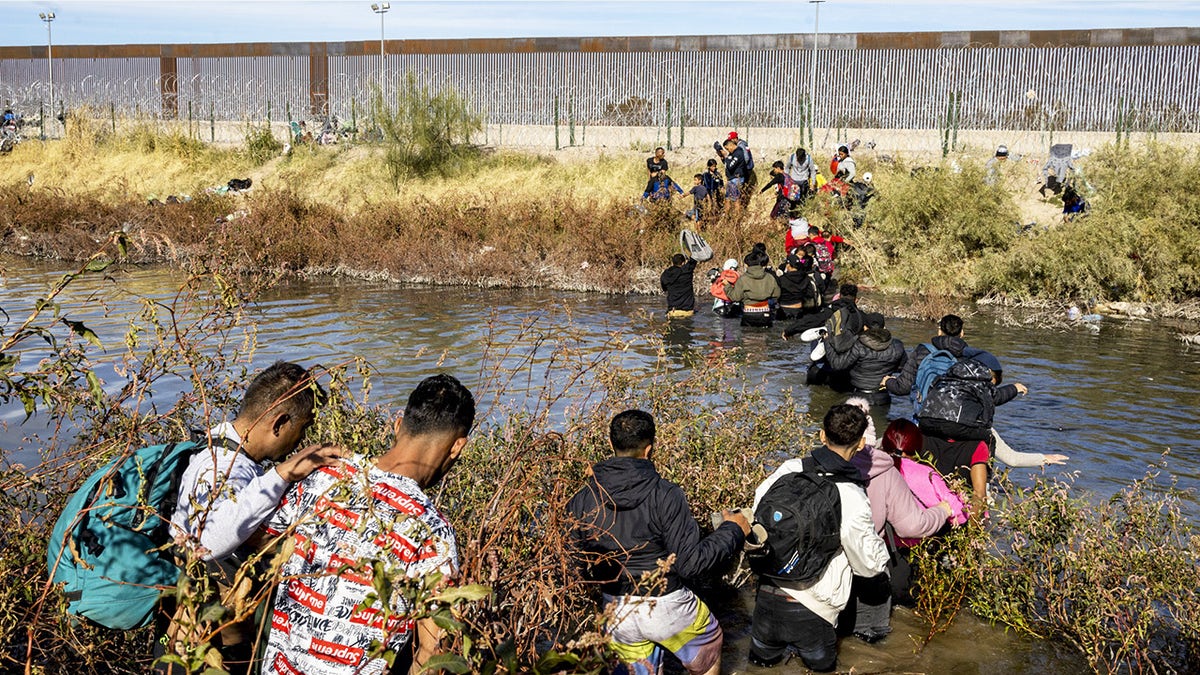Migrants less likely to be vaccinated against measles: Marc Siegel
Fox News medical contributor Marc Siegel discusses how migrant crossings could be contributing to the outbreak of measles across the U.S. on ‘The Ingraham Angle.’
All the presidential trips to the southern border in the world won’t change the fact that the border is porous, that there have been more than 7.3 million illegal immigrants who have reportedly crossed there over the last three years. I believe this constitutes a public health emergency, especially when you consider that migrants cannot be screened for diseases before entering the U.S.
And not only do migrants come originally from countries where rates of potentially deadly illnesses like measles, polio, drug resistant tuberculosis or chicken pox are higher than in the U.S., at the same time, the vaccination rates are lower and the compliance rates among migrants lower still.
I spoke with Dr. James Hodges, a prominent internist who works in Laredo, Texas at our southern border. "In Texas, we are seeing people without documented vaccinations. We have seen an uptick in childhood diseases like measles and mumps. We are seeing some unusual skin conditions like resistant cutaneous leishmaniasis from Central America. We have always seen resistant TB, but there is more in the last two years. Mostly, we are seeing a huge increase in sexually transmitted diseases including syphilis, hepatitis C and gonorrhea. A huge rise in syphilis especially. I fear that it will soon be the same everywhere as these migrants are being moved to sanctuary cities all over the nation!"
REPUBLICANS SOUND ALARM ON MIGRANT SURGE’S THREAT TO HOSPITALS IN 'SANCTUARY' CITIES
Measles is a worldwide problem with 9 million cases in 2022 and a 79% increase in 2023 while at the same time, the vaccination rate declines. We have had 35 cases in the U.S. this year, including the most recent outbreak in Florida, almost all emanating from travelers.

Hundreds of migrants, predominantly from Venezuela, cross the Rio Grande with the intention of seeking humanitarian asylum by crossing the border between Mexico and the United States in Ciudad Juarez, Mexico, on December 5, 2023. (David Peinado/Anadolu via Getty Images)
While mass vaccination has protected our kids from larger outbreaks and remains a crucial public health measure with a very high level of protection, at the same time the amount of exposure we are having to measles (which can hospitalize one in five unvaccinated people who get it) is increasing.
Consider that Yemen, Azerbaijan, Kazakhstan and India top the list of countries with the most measles. Forty thousand Indians entered the U.S. illegally last year alone. It is impossible to screen these migrants who come here from anywhere, including from countries such as India, with measles outbreaks. There have long been measles outbreaks in our southern states traced to migrant workers.
The same holds true for flu, COVID-19, chicken pox, resistant tuberculosis as well as the STDs Hodges highlighted. Not to mention dehydration, malnutrition, injuries and drownings affecting people trying to cross. And then there are synthetic opioids, including fentanyl and nitazenes, which are brought freely across our porous southern border and accelerate the drug epidemic thoughout the U.S.
CLICK HERE FOR MORE FOX NEWS OPINION
Most Americans have a story of a relative or ancestor who crossed here legally being delayed for health reasons either recently or in centuries past, when health screenings were a crucial part of the rites of passage.
The need for a public health barrier still exists, and in fact, Dr. Robert Redfield, the CDC director at the beginning of the COVID-19 pandemic, told me that invoking Title 42 in 2020 was not meant for COVID-19 alone, but for other contagious diseases as well.
Redfield said that he was trying to protect Customs and Border Protection agents who were being overwhelmed and exposed to not just COVID-19 but the flu and other contagious diseases as well as the illegal migrants who were being held in overcrowded facilities. The problem is that it is essentially impossible to screen people who are entering the country illegally or, as Redfield told me, "to process them in a manner consistent with sound public health procedures."
CLICK HERE TO GET THE FOX NEWS APP
Title 42 was created decades ago to enable emergency action, including, when applicable, to "stop the introduction of communicable diseases." The COVID-19 pandemic has ended, but the problem has not gone away. Bringing back Title 42 could be a small step towards recognizing that our unsecured southern border includes a significant public health risk.
Don’t get me wrong, communicable diseases are not unique among migrants, but we have no systemic ability to either screen them for diseases or vaccinate them against them. At a minimum, we must do our best to ensure that anyone entering this country is not putting the rest of our citizenry at risk.






















